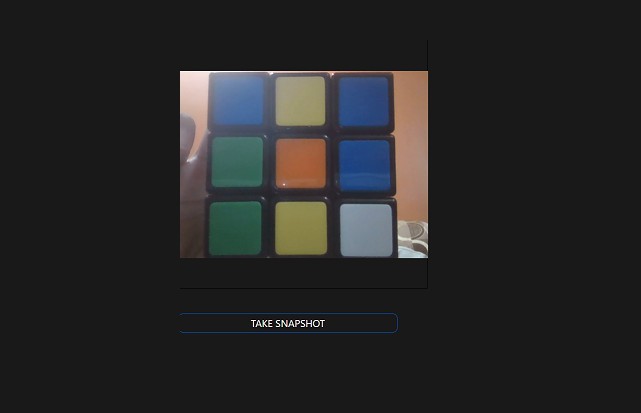webcube
Rubik's cube assistant on Flask webapp. This webapp accepts the six faces of your cube and gives you the voice instructions as a response.
Demo -> Link
Requirements
This webapp requires a lot of extra modules and packages to be downloaded, It is recommanded to follow this order :
yum install python3 -y
yum install gcc-c++ -y
yum install python3-devel -y
pip3 install flask
pip3 install Pillow
pip3 install numpy
pip3 install joblib
pip3 install scikit-learn
pip3 install scikit-build
pip3 install opencv-python
yum install opencv opencv-devel opencv-python -y
pip3 install kociemba
Usage
This webapp runs on port no. 85 by default, but can be changed in the app.py file. To use take edge to edge and centred pics of the cube.
Start with Red face with the white face down, and take pictures in the order Red -> Green -> Orange -> Blue -> Yellow -> White. After this click get solution.

Working
The six images of six faces have there respective data_uri, which are submitted by a form when you click get solution. This data_uri are converted to images and saved.
Next the function order from order_image.py renames and creates new images (format example face_0.png to face_5.png), according to images that have central tile colour matching in the order yellow -> green -> red -> white -> blue -> orange. Naming images in this order is required for the cube to be solved. A cubestring is formed after predicting the tile colours and getting there respective notations.
colour_mappings = {
"red" : "F",
"green" : "R",
"blue" : "L",
"yellow": "U",
"white" : "D",
"orange" : "B"
}
The cubestring is passed to the kociemba.solve() function, which return a string containing instructions for solving the cube.
Kociemba is a Python/C implementation of Herbert Kociemba's Two-Phase algorithm for solving Rubik's Cube.
Read full documentation of Kociemba here -> Link
the instructions are decoded to human voice instructions. This instructions are then written to the output.js file, which outputs this instructions as voice.
Building docker image
build docker image by ->
docker build -t <username>/<repo-name>:<version>
I have also uploded already build image for this webapp on Docker Hub -> Link
deploying the image in Kubernetes
create a deployment by ->
kubectl create deployment <deploy-name> --image <username>/<repo-name>:<version>
Scale the deployment if necessary and create a service by ->
kubectl expose <deploy-name> --port=85 --name=<service-name> --type=LoadBalancer


